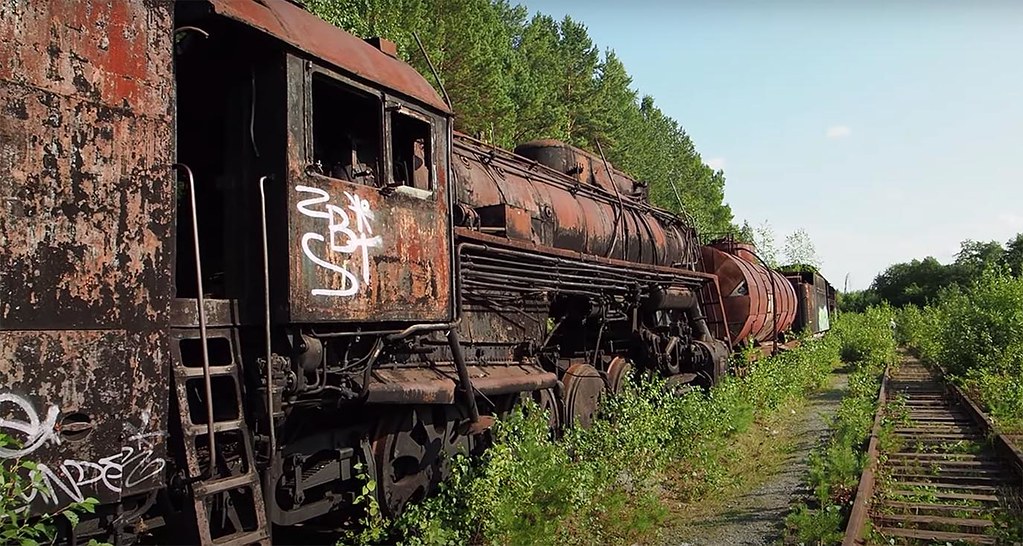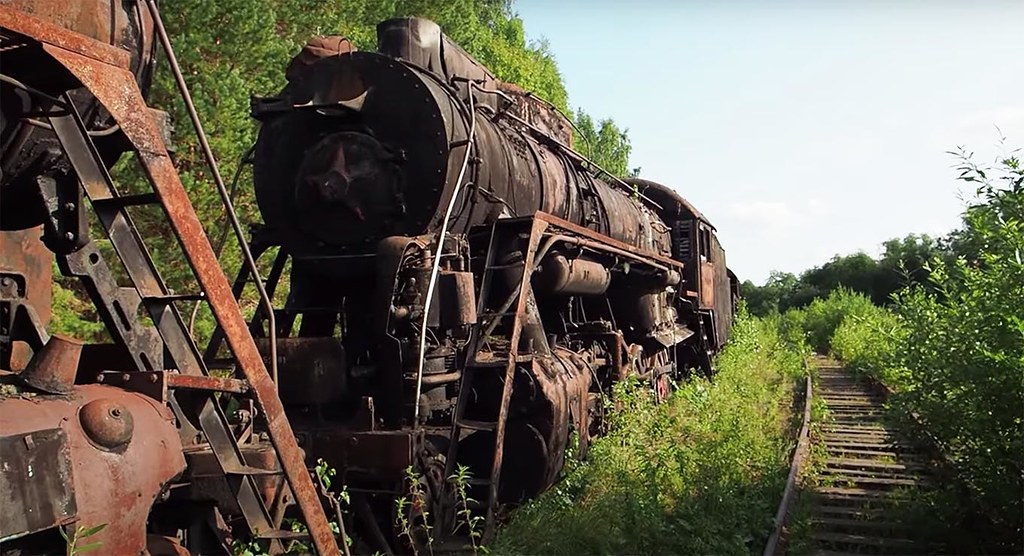Some abandoned steam locomotives that were waiting for a nuclear war
During the Cold War, much of the world lived wondering what would happen after the mutual launch of missiles that would lead to an atomic war.
One of the problems that this atomic war was going to generate was related to the effects of the electromagnetic pulses of nuclear weapons, which would render all vehicles with electrical equipment useless, including modern locomotives, both electric and diesel. For this reason, several countries created railway reserves made up of old steam locomotives, which would be the only ones that could be used after a nuclear attack.
The possible use of these stored steam locomotives posed many challenges, since they required coal and water tanks and other infrastructure for their maintenance, and practically all of this had been dismantled when those locomotives were withdrawn from service . These machines also needed personnel who knew how to use them, a staff already scarce under normal conditions. The end of the Cold War led to the abandonment and scrapping of much of these locomotives. However, Caravan Expedition has had the opportunity to film some of the locomotives stored by the USSR for a possible nuclear war, some locomotives sadly abandoned today and which, according to that channel, are being slowly transferred to an unknown destination:
You can see below some captures of the video. The locomotives are in a wooded area, heavily rusted and surrounded by vegetation.

The railway itself has clear signs of being abandoned for years, as vegetation has grown between the sleepers.

The image given by this strategic locomotive warehouse is certainly post-apocalyptic, as if humanity had become extinct and these machines had remained there as mute witnesses of our existence.

In addition to locomotives, there are also tenders (the coal bunkers that transported fuel for the machines) and a tank wagon, perhaps to transport the water needed to run these locomotives.

The locomotives seen in the video are of the so-called Class L of type 1-5-0 (that is, with five large wheels and one small wheel in front on each side of the locomotive). The letter is for the initial of its designer, L.S. Lebedyanskiy. These locomotives weighed 92 tons empty, could load up to 18 tons of coal in their tender, and reached a top speed of 80 km/h. Between 1945 and 1955, the Soviet Kolomensky Zavod factory produced 4,199 locomotives of this type. These locomotives were withdrawn from service between 1975 and 1995, and most of them were scrapped. Today some 300 survive, many of them still operational.

|
Don't miss the news and content that interest you. Receive the free daily newsletter in your email: Click here to subscribe |
- Lo más leído
- A British fairytale ruin: the abandoned shoe house on the Isle of Wight
- The interior of the Statue of Liberty torch and the sabotage that canceled its visits
- The supermassive black hole of Phoenix A, the biggest known light-devouring monster
- A virtual tour of ancient Rome in full color, just as it was in its heyday
- The unknown Soviet female cosmonaut who died on a mission: history or hoax?
- A large collection of Volkswagen cars hidden in an abandoned mine in Switzerland
- An old Soviet military plane abandoned from 1971 on a Russian island near Alaska

 ES
ES





Opina sobre esta entrada: